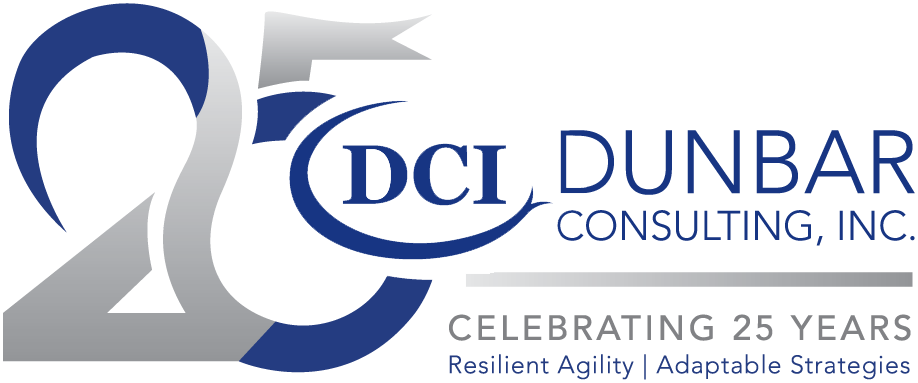About EDGAR Next
The SEC is considering potential technical changes to how filers access the EDGAR system to make submissions, and how filers manage individuals who file on their behalf, collectively referred to as EDGAR Next—Improving Filer Access and Account Management.
Benefits of EDGAR Next include enhancing the security of EDGAR, improving the ability of filers to securely maintain access to their EDGAR account, facilitating responsible management of EDGAR credentials, and simplifying procedures for accessing EDGAR.
Commission’s Request for Comment on Potential Technical Changes to EDGAR – Update
March 4, 2022
The comment period for the SEC’s Request for Comment on Potential Technical Changes to EDGAR Filer Access and Filer Account Management Processes closed on December 1, 2021. On January 5, 2022, EBO posted an announcement indicating that the Chair has asked the staff to consider how the agency might address concerns articulated by commenters in response to the Request for Comment.
Staff have been engaged in a dialogue with commenters regarding concerns raised in response to the Request for Comment, and discussions have included consideration of further approaches to EDGAR filer access and filer account management processes. Among the topics being discussed are additional submission options that would enable the security enhancements envisioned in the Request for Comment for filing agents (and filers using third party software to file with EDGAR), potential adjustments to the filer account management process for the contemplated user and filer administrator roles, and transition options to implement the potential technical changes to EDGAR filer access and filer account management processes. Please note that the statements made during these meetings represent the views of the staff, and not those of the Commission. The staff cannot address the timing of when the Commission would engage in rulemaking in this matter, but the staff are committed to exploring solutions that would satisfy the Commission’s objectives as well as the concerns raised by commenters.
If you are interested in participating in the dialogue with commenters, please email EDGARNextBeta@sec.gov with your name, title, employer name, and business telephone number. Thank you.
EDGAR Beta – Update
February 14, 2022
On March 1, 2022, EBO plans to pause the use of the EDGAR beta environment (“EDGAR Beta”) for testing of EDGAR Next code and to deploy code for other testing purposes. At a future date, to be announced, EDGAR Next code will be re-deployed in EDGAR Beta to allow filers to test possible future EDGAR Next technical changes.
EDGAR Beta incorporates most of the potential technical changes to EDGAR filer access and account management processes being considered by the SEC. EDGAR Beta allows filers to review and test many of the potential technical changes to EDGAR, including integration of Login.gov into EDGAR access; a revised EDGAR Filer Management website; and a new user management function. Additional functions are periodically added to EDGAR Beta. Please consult the EDGAR Beta release notes below and on EDGAR Beta Filer Management website for a description of these functions.
Filers may register for EDGAR Beta using the Sign up for EDGAR Beta page. As part of the registration, individuals will be redirected to Login.gov to obtain unique individual account credentials. These Login.gov credentials may be used to log in to EDGAR in the future if the potential technical changes to EDGAR filer access and account management are implemented.
EDGAR Beta Release Notes
Release date: January 24, 2022
EDGAR Beta Environment
My profile:
- EDGAR filers can test the ability to view and edit contact information by visiting the “My profile” page on the EDGAR Beta Filer Management website.
Accession numbers:
- The first sequence of digits in an accession number has been updated from representing the login CIK to instead representing the User CIK. The User CIK is a randomly generated 10 digit number unique to each EDGAR user.
If you want to view the previous EDGAR Beta release notes, please visit the EDGAR Beta Filer Management website.
Key components of EDGAR Next
1. Requirement to obtain individual account credentials and use of Login.gov
If the SEC implements the potential technical changes to EDGAR filer access and account management processes, each individual who seeks to file on EDGAR would need unique account credentials from a third-party service provider to log in to EDGAR filing websites. We are considering Login.gov as the third-party service provider, an official website of the U.S. General Services Administration that provides participating federal agencies with a secure public sign-in service.
- Each person who seeks access to file on EDGAR, whether as an individual filer or on behalf of an entity, would need to obtain Login.gov credentials before applying for access.
- For current filers, each person who files on behalf of the filer would be required to obtain Login.gov credentials. Current filers would further be required to transition to the new EDGAR filer access and account management processes, and details about the transition will be provided if the SEC implements the potential technical changes. (For more about the transition of current filer accounts, see below.)
Individuals would use their Login.gov credentials — and the filer’s CIK Confirmation Code (“CCC”) — to sign in and make submissions on behalf of their affiliated filers on EDGAR.
- EDGAR would discontinue the current EDGAR password, PMAC, and passphrase.
Obtaining Login.gov credentials
To obtain Login.gov credentials, individuals would visit any of the EDGAR filing websites, which would redirect them to Login.gov.
- At Login.gov, individuals would provide a business email address. Individuals should only provide business (not personal) information.
- After the individual confirms their business email address, Login.gov would prompt them to create a password and an option for authentication—for example, by text message, phone call, or a security key.
- Once an individual has authenticated successfully, Login.gov would redirect them to EDGAR.
For EDGAR Beta, the “Sign up for EDGAR Beta” page would redirect individuals to Login.gov to obtain credentials. Login.gov credentials obtained through the “Sign up for EDGAR Beta” page may be used to log in to EDGAR in the future if the potential technical changes to EDGAR filer access and account management processes are implemented.
2. Filer administrators and users—introduction
Filer administrators
Each filer would designate at least one filer administrator, an individual authorized by the filer to manage individual users. Filer administrators could:
- File on EDGAR by entering their Login.gov credentials and the filer’s CCC;
- Add and remove users;
- Add and remove filer administrators;
- Remove themselves as a filer administrator;
- Delegate to a filing agent (and remove that delegation);
- Receive notification of filings made by users;
- View and manage certain information about the filer in EDGAR; and
- Confirm annually their permissions as a filer administrator and those of other filer administrators and users.
There would be a minimum but no maximum number of filer administrators:
- An entity filer would be required to designate two filer administrators.
- An individual filer or single-person trust or LLC would be required to designate at least one filer administrator, and they would be able to serve as their own filer administrator.
Users
Individuals authorized to make submissions on behalf of the filer would be known as the filer’s users. A user could:
- File on EDGAR by entering the user’s Login.gov credentials and the relevant CCC;
- View their own permissions in the user management function;
- Remove their ability to file on the filer’s behalf;
- View and manage certain information about the filer in EDGAR; and
- Confirm annually their permissions as a user for the filer.
A user could not view or take action on the permissions of filer administrators or other users.
3. Filer administrator—completion of Form ID
After obtaining Login.gov credentials, the filer administrator would—on behalf of the filer—complete Form ID, the uniform application for EDGAR access.
- We anticipate that the SEC may amend Form ID if the potential technical changes to EDGAR filer access and account management processes are implemented, but that many current requirements for Form ID would remain in place.
- We project that applicants would still be required to complete the form online and to upload a copy of the completed form containing the notarized signature of an authorized person of the filer.
If access is granted, EDGAR would provide the filer administrator with a new CIK (if relevant) and a link to the EDGAR Filer Management website, where the filer administrator could:
- Sign in with their Login.gov credentials and manage the filer’s EDGAR account (see below).
- Generate a new CCC.
4. Filer administrator—user management
Through the user management function on the EDGAR Filer Management website, filer administrators would be able to perform the following actions by selecting the relevant buttons:
- Add a user;
- Remove a user;
- Add a filer administrator, or remove an existing filer administrator;
- Change the permissions of a user to a filer administrator and vice versa;
- Delegate filing authority to a filing agent and remove that delegation; and
- Confirm annually their permissions as a filer administrator and those of other filer administrators and users.
5. Filing agent as delegated filer, additional filer administrator, or filer administrator authorized to complete Form ID
Because filers often use a filing agent—a law firm, financial printer or other person engaged in the business of making submissions to EDGAR on behalf of filers—the potential EDGAR filer access and account management processes would allow filers to delegate filing authority to the filing agent, add a filing agent as a filer administrator, or authorize a filing agent to complete and submit a Form ID on the filer’s behalf.
Delegated filer
A filer administrator could delegate the ability to file to a filing agent through the Delegate button in the user management function.
- Delegation would allow the filing agent and its personnel to file on behalf of the filer.
- The filing agent would designate its own filer administrator to accept delegation and to manage its users who could file under the delegation.
- The filing agent would not have permissions to manage the filer’s filer administrators and users.
- The filer administrator could remove the delegation at any time through the “remove delegation” option in the user management function.
Additional filer administrator
A filer administrator could add a filing agent as another filer administrator for the filer through the “Add Filer Administrator” option in the user management function.
Filer administrator authorized to complete and submit Form ID
A filing agent could apply for EDGAR access on the filer’s behalf and act as a delegated filer administrator if:
- The filer provides the filing agent with a power of attorney to complete and submit the Form ID;
- The filing agent completes the Form ID as a filer administrator; and
- The filing agent uploads the power of attorney to EDGAR with the completed, notarized Form ID.
6. Transition of current filers
If the potential technical changes to EDGAR filer access and account management processes are implemented, all current EDGAR filers would be required to transition their accounts to the new processes.
- Individuals who file on behalf of current filers would be required to obtain Login.gov credentials.
- Current filers would be provided a method to transition their EDGAR accounts.
- Current filers would not need to complete Form ID to transition accounts.
- We would provide current filers with details about how to transition accounts and the deadlines for transition if the potential technical changes to EDGAR filer access and account management processes are implemented.

